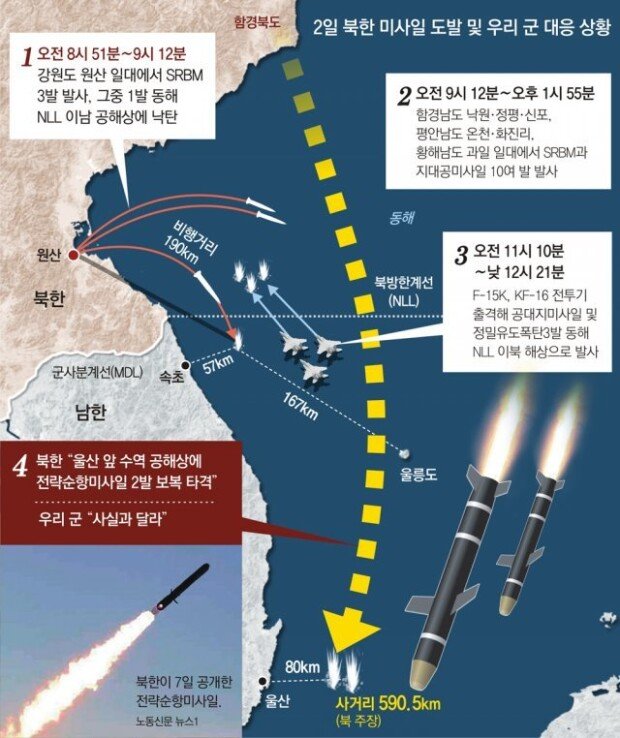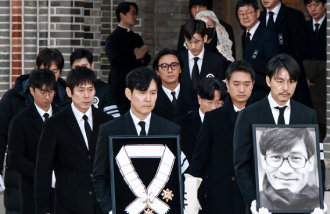N. Korea claims it launched missiles for revenge to near Ulsan
N. Korea claims it launched missiles for revenge to near Ulsan
Posted November. 08, 2022 07:44,
Updated November. 08, 2022 07:44



On Monday, the North Korean Army’s General Staff Department claimed that it launched two strategic cruise missiles into the international waters 80 kilometers away from Ulsan in South Korea from North Hamgyong Province on the first day of its four-day military operation against South Korea last week. The missiles traveled 590.5 kilometers. This was not included in the South Korean military’s briefing of North Korean provocations. The South Korean military said the North’s claim was false, and no cruise missile was identified.
As North Korea’s claims have always been filled with exaggeration and bluffing, it is hard to accept its claim as they say. The South Korean military also believes this was one of North Korea’s deceptive attempts with false information. North Korea also claimed through Kim Yo Jong in August that long-range cruise missiles were launched from Anju, South Pyongan Province, not Onchon, which was the location announced by the South Korean authorities. At the time, the South Korean military maintained its previous judgment based on the ROK-U.S’s intelligence surveillance capability.
However, the North’s latest claim is not groundless. Given the characteristics of cruise missiles that can avoid detection and interception by flying at a very low altitude, the South Korean military could have missed them. The South Korean military could not announce the exact number of missiles launched by the North on Wednesday. Rather than making a quick conclusion that it was a lie, it is better to keep open the possibility of detection failure and reinforce the military’s response stance.
Unfortunately, the South Korean military has revealed many issues lately. There was an error with the air force launching precision-guided weapons beyond the Northern Limit Line (NLL) on Wednesday. In shooting training, interception missiles exploded during flight, or their launches were suspended due to errors. There was an incident where shells and ATACMS of Hyunmoo-2c ballistic missiles went missing last month. They are part of the three-pillar core weapon system against North Korea’s nuclear weapons and missiles.
There can’t be absolute perfection in a military operation. Unexpected variables and confusion on battlefields are unavoidable, so the military must assume and prepare for the worst-case scenario. The South Korean military should review its overall response system against the North and maintain its ongoing preparedness for action through rigorous training, maintenance, and management.
Kyu-Jin Shin newjin@donga.com



![지하철 타고 가는 북한산성…외국인도 반한 ‘K등산 맛집’[전승훈 기자의 아트로드]](https://dimg.donga.com/c/138/175/90/1/wps/NEWS/IMAGE/2026/01/10/133120824.1.jpg)


![두쫀쿠가 뭐라고…영하 8도에 아이들 1시간 줄세운 어린이집 [e글e글]](https://dimg.donga.com/c/138/175/90/1/wps/NEWS/IMAGE/2026/01/09/133126969.3.jpg)
